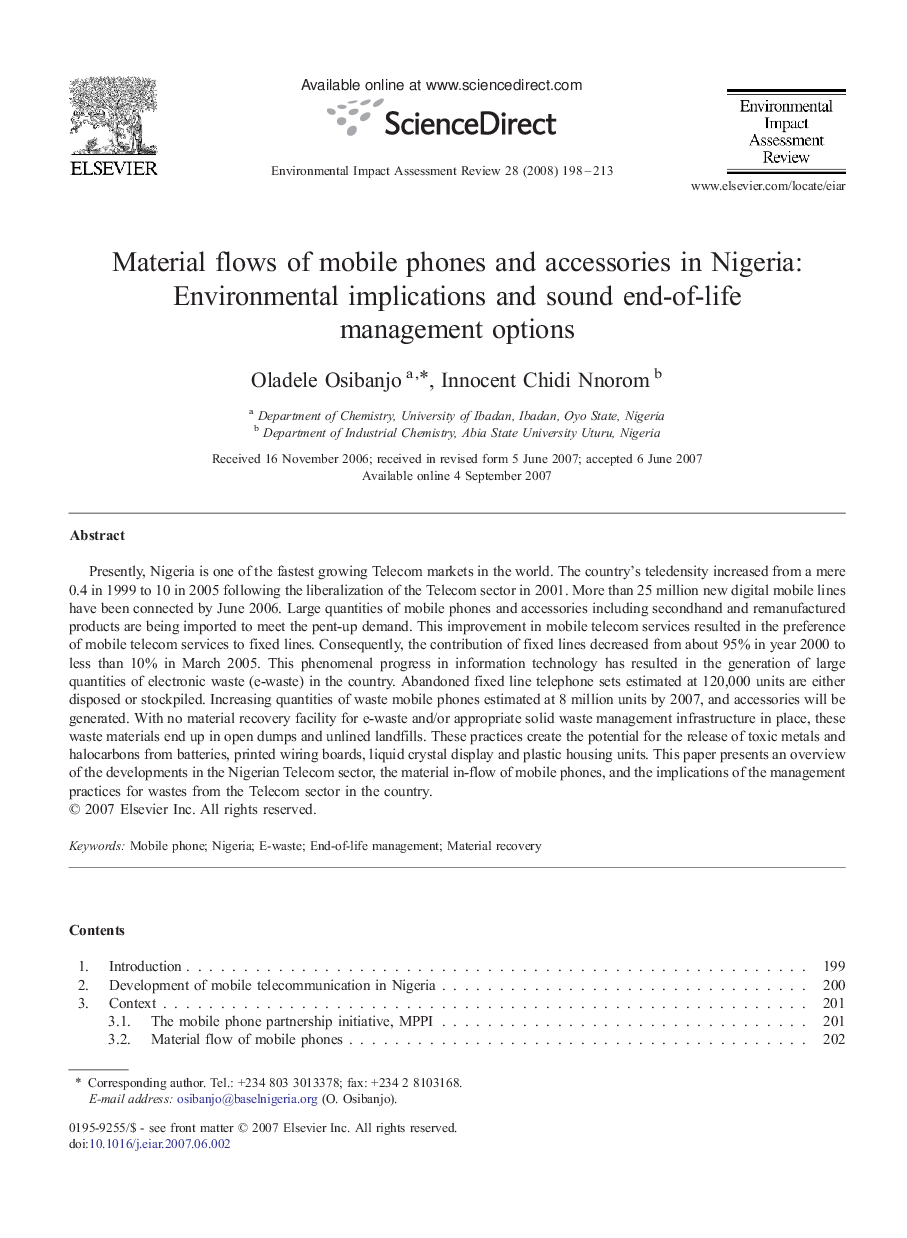| Article ID | Journal | Published Year | Pages | File Type |
|---|---|---|---|---|
| 1053073 | Environmental Impact Assessment Review | 2008 | 16 Pages |
Presently, Nigeria is one of the fastest growing Telecom markets in the world. The country's teledensity increased from a mere 0.4 in 1999 to 10 in 2005 following the liberalization of the Telecom sector in 2001. More than 25 million new digital mobile lines have been connected by June 2006. Large quantities of mobile phones and accessories including secondhand and remanufactured products are being imported to meet the pent-up demand. This improvement in mobile telecom services resulted in the preference of mobile telecom services to fixed lines. Consequently, the contribution of fixed lines decreased from about 95% in year 2000 to less than 10% in March 2005. This phenomenal progress in information technology has resulted in the generation of large quantities of electronic waste (e-waste) in the country. Abandoned fixed line telephone sets estimated at 120,000 units are either disposed or stockpiled. Increasing quantities of waste mobile phones estimated at 8 million units by 2007, and accessories will be generated. With no material recovery facility for e-waste and/or appropriate solid waste management infrastructure in place, these waste materials end up in open dumps and unlined landfills. These practices create the potential for the release of toxic metals and halocarbons from batteries, printed wiring boards, liquid crystal display and plastic housing units. This paper presents an overview of the developments in the Nigerian Telecom sector, the material in-flow of mobile phones, and the implications of the management practices for wastes from the Telecom sector in the country.
